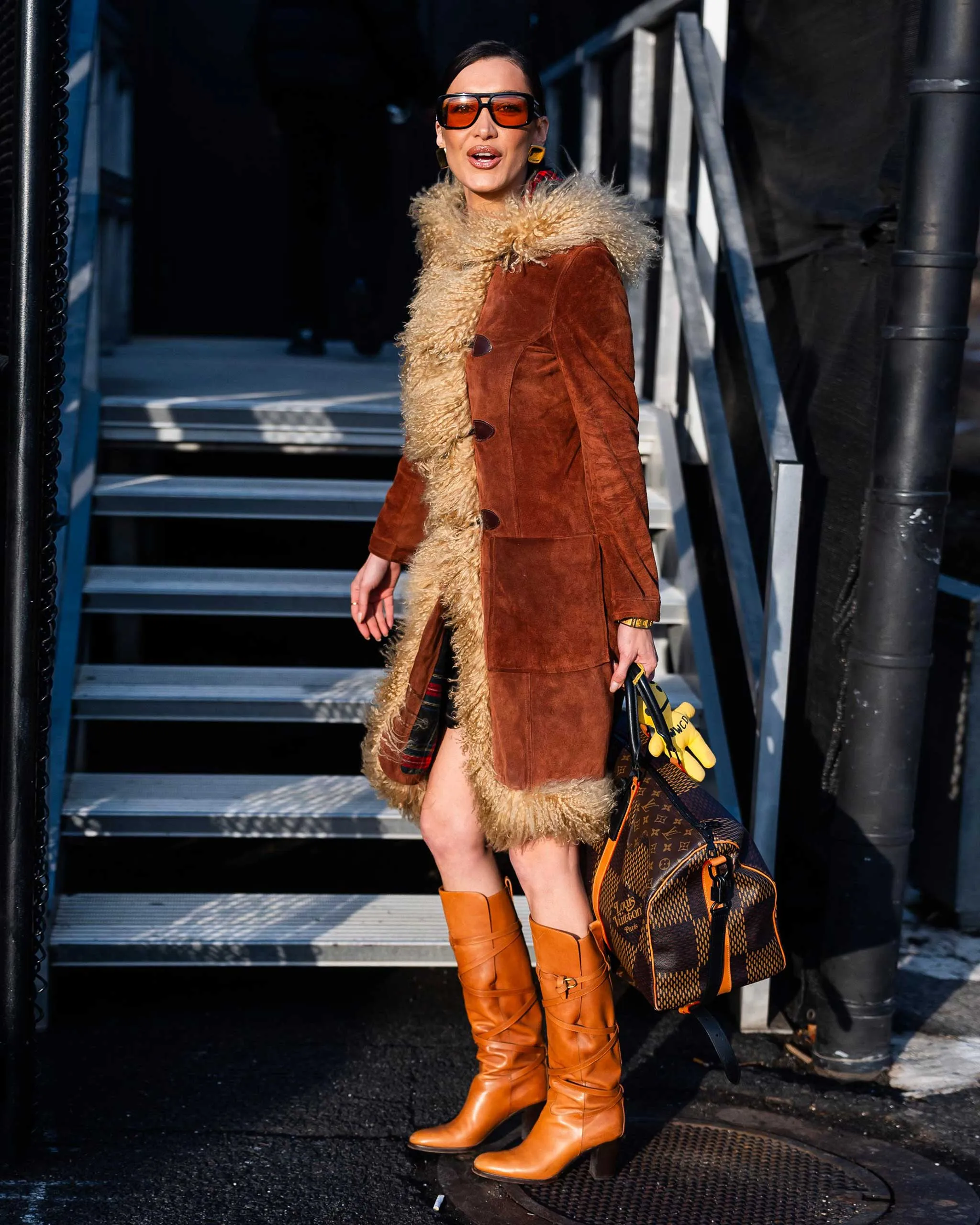TheStewartofNY
Buying vintage has become second nature to many of us in recent years – including in the shoe department, where we’ve seen the rise of Margiela Tabis and Miu Miu ballet flats on It-girls everywhere. One common complaint, though? Pre-loved shoes, whether found in the bargain bins of charity shops, or hunted down via the vast array of resale sites now at our fingertips, quickly falling apart after several wears.
“I have a well-loved collection of vintage shoes – too well loved,” Anna Cafolla, Vogue.com’s fashion news editor, tells me. “There’s nothing like the panic of being far from home and feeling your heels begin to dampen as rain seeps through your pumps. I have some Prada heels I got cheap on Italian Vinted that dyed my feet red in the shape of the criss-cross buckle straps, and Gabor boots that left me soleless on the dancefloor.”
Whereas any damage to vintage clothing is easy to spot, the same cannot be said for second-hand footwear, where the issues are often internal. “Shoes naturally are subject to more wear and tear than your average garment or accessory, so they tend to break down faster, especially without proper maintenance and care,” Julie Ann Clauss, professional archivist and founder of The Wardrobe, says. As Anna attests, the sole coming off is one of the biggest concerns for vintage shoe collectors. “This happens when the adhesive degrades over time and stitching becomes loose, which can cause soles to detach from the upper of the shoes,” Costas Xenophontos, owner of Classic Shoe Repairs, explains.
Luckily, there are measures you can take to prevent your vintage shoes from – quite literally – disintegrating on your feet. Firstly, look for quality materials. “Genuine leather uppers and heels made from wood are good places to start – they hold up much better than synthetic leathers,” Clauss advises. On that point: generally speaking, heritage and designer labels are more likely to stand the test of time than your average high-street brand.
Still, even the most reputable brands aren’t immune to wear and tear, which is why you also need to carefully examine the condition of any pre-loved shoes that you’re thinking of buying. “Check that the soles are not too thin, too worn, or cracked,” Xenophontos cautions. “Although sole replacement is possible, it’s important that the uppers are in good enough condition to take a new sole. Look out for cracks, dryness or excessive discolouration – shoes in good condition should have supple leather with minimal damage.” If buying in person, it’s a good idea to give them a sniff (no matter how gross that may sound!). “Any strong musky or mouldy smell indicates that the shoes have been poorly stored and could have moisture damage”.

Once you’ve taken the plunge and made the purchase, it’s time for some reinforcements, right away. “ I immediately – no matter how much I want to wear them – take a new pair of vintage shoes to my local cobbler and have the soles reinforced and heel caps added,” Cafolla tells me, following her scarring experiences. In fact, proper maintenance is essential to ensure your beloved new (old) shoes stay in good nick. “Spraying your shoes with waterproof spray and regular cleaning will help prevent water damage and stains,” Xenophontos says. “Repairing small issues like scuffs, loose stitching, sole separation or even replacement of heel tips will prevent bigger problems down the line.”
Storing your shoes properly is crucial, too – both to prevent any long-term damage, and to stop them from losing their shape. “Shoes should be kept in a cool and dry place,” Xenophontos continues. “Avoid plastic boxes, which can trap moisture, and store with either tissue paper or shoe trees inside.”
While there is lots you can do to extend the life of your shoes (including not wearing them in the rain!), it’s one item in your wardrobe that likely won’t survive forever – and it’s okay to make peace with that. After all, just by buying a pair of vintage shoes, you’re already giving them a second (or third) life. “It’s hard letting go of your favourite pair, but when a pair has done its work, it’s time for [more] treasure hunting,” Spasia Dimitrievska, founder of Five Dots Vintage, says.
This article was originally published on British Vogue.
